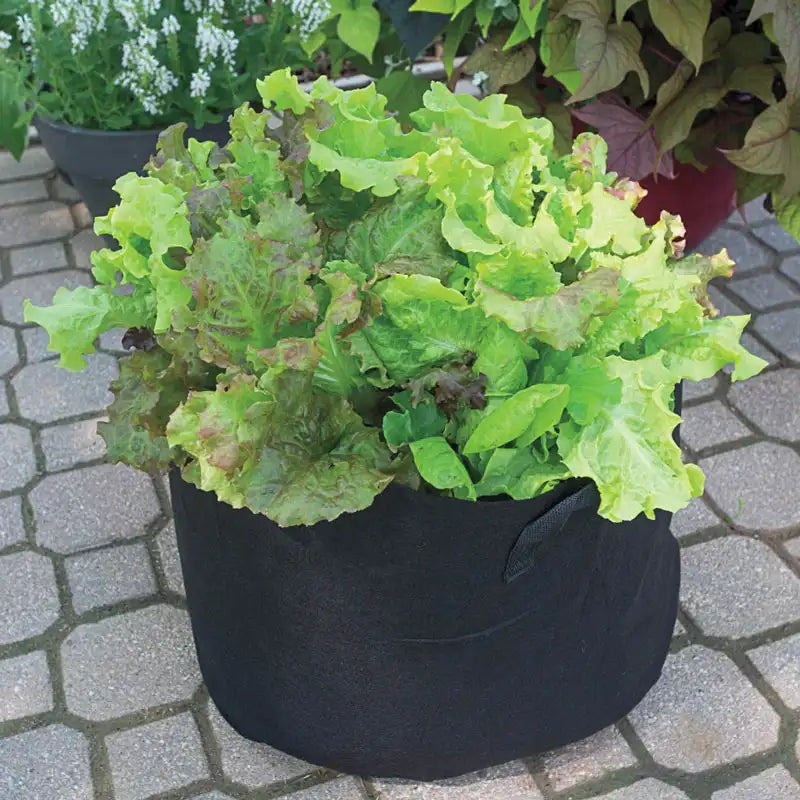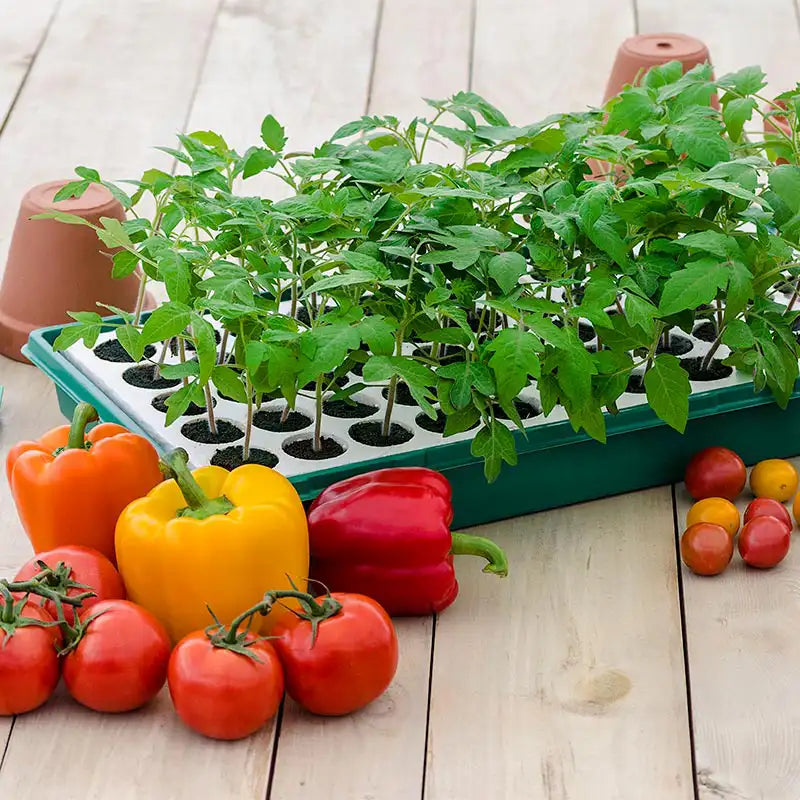Special Report: Predicted Fresh Produce Inflation Means It's More Important Than Ever to Grow Your Own Food
Inflation, Covid, the heartbreaking war in Ukraine (a major grain producer), Climate Change & massive labor shortages have all contributed to a ‘perfect storm’ of rising prices for fresh produce. The Consumer Price Index reports that grocery prices overall rose 12 percent in 2022. That’s bad enough, but the Bureau of Labor Statistics reports a startling 38 percent rise in the wholesale price of fresh produce—IN ONE MONTH OF 2022 ALONE.
BTW, the price of fresh eggs rose a whopping 244 percent last year, so if you’ve been thinking about keeping chickens, this would be a good year to start. Or do like I do and make connections with chicken owners in your neighborhood; buy or barter their extra eggs and you’ll save money and enjoy fresher food (as indicated by the deepness of color in the yolks).
Back to the garden: When Covid first hit I was declared an ‘essential worker’ because I was teaching people to grow food gardens, which would get them outside to brighten their spirits without risk. Various organizations estimated that the number of people who grew food gardens doubled that first year. Seed and plant suppliers sold out earlier than ever. The following year it doubled again, a good sign for people, birds, bees, butterflies and children of all ages; oh—and good for the planet if you grew organically; and you better have!
So once again, we are presenting a Question of the Week that originally ran on January 15th of last year, providing advice for people who want to begin growing some of their own food, and for the ‘already growers’ who want to up their game.
Seeds: Two kinds; seeds that are directly sown in the ground and seeds that are meant to be used to grow ‘starts’: plants that will go outside if they survive two months of your tender mercies indoors.
If you are a first timer, and have never started tomatoes, peppers, eggplant, cucumbers and such indoors, I urge you to take a pass on seed-starting. Contact your local INDEPENDENT garden center and reserve the varieties you wish to plant outside. Or ask a long-time gardening friend to grow a few extra starts for you; pay them off with a big bag of organic potting soil and/or perlite. Visit your surrogate direct seed starter regularly; watch, learn and listen (or is that just for train tracks?).
Seeds for direct seeding in the Spring (and Fall): Lettuce, spinach, kale and other salad greens are up first.
Problem: In many areas of the country the Spring soil is too cold to sprout the seeds, but the sprouted plants will thrive outdoors in the cool air of March and April and continue to produce through the end of June. (Cold weather crops do NOT like Summer.)
The solution? Gather up all the larger-sized containers you can find (or borrow) and fill them with a mixture of organic potting soil, perlite and some high-quality finished compost. No manure; no peat moss; no bags of “organic soil” and no rocks in the bottom. You can be container-creative, but quirky containers must have good drainage.
Water the containers by sitting them in a sink with a coupla three inches of water for an hour or so. Note how much heavier they are now; that’s the best way to judge the water needs of containers; light weight means it’s time to water; if it’s heavy, it already has enough water; don’t drown the poor plants!
Now sow the seeds of a leaf lettuce variety (or kale, or spinach, or other spring greens) thickly onto the saturated soil. Cover the seeds with a light dusting of organic potting soil, then cover the container with Saran Wrap and place in a warm but not hot spot in your home; no light is needed at this time. Check the plastic wrap daily; if no moisture is beading up on the inside of the Wrap, mist the surface well and rewrap.
When sprouts appear, remove and recycle the wrap at a supermarket that accepts plastic bags for recycling. Move the containers to the brightest indoor spot you have for about a week. Then, depending on when you started this bold adventure, take the pots outside. If days and nights are cold as all heck, wait a while. If days are warm, but nights are below freezing, bring them back in at dinnertime and take them back out the next day. Lather, rinse, repeat. When nighttime temps stay reliably in the high thirties or above, leave the containers outside in full sun. Water GENTLY if the containers feel light.
When the greens reach a solid three or four inches high, you can begin harvesting them ‘cut and come again’ style. Using a sharp pair of scissors, clip off the tops of each leaf but leave a good inch behind to regrow. You can repeat this at least three times, and by then it should be warm enough to direct seed more greens right in the ground; or preferably, raised beds. (Remove all mulch from these areas two weeks in advance to help the soil warm up.)
Good news: After Cold weather has passed you’ll be direct seeding in warm soil. You’ll also be harvesting fresh super-sweet greens (lettuce and its friends are always sweeter when grown in cold weather) that you can enjoy personally or sell on the black market for gas money.
Other seeds of cold weather loving plants to order soon:
Peas: snow, snap or English ‘shelling’ peas. We will discuss these tasty treats of Spring next week.
BTW, the price of fresh eggs rose a whopping 244 percent last year, so if you’ve been thinking about keeping chickens, this would be a good year to start. Or do like I do and make connections with chicken owners in your neighborhood; buy or barter their extra eggs and you’ll save money and enjoy fresher food (as indicated by the deepness of color in the yolks).
Back to the garden: When Covid first hit I was declared an ‘essential worker’ because I was teaching people to grow food gardens, which would get them outside to brighten their spirits without risk. Various organizations estimated that the number of people who grew food gardens doubled that first year. Seed and plant suppliers sold out earlier than ever. The following year it doubled again, a good sign for people, birds, bees, butterflies and children of all ages; oh—and good for the planet if you grew organically; and you better have!
So once again, we are presenting a Question of the Week that originally ran on January 15th of last year, providing advice for people who want to begin growing some of their own food, and for the ‘already growers’ who want to up their game.
Seeds: Two kinds; seeds that are directly sown in the ground and seeds that are meant to be used to grow ‘starts’: plants that will go outside if they survive two months of your tender mercies indoors.
If you are a first timer, and have never started tomatoes, peppers, eggplant, cucumbers and such indoors, I urge you to take a pass on seed-starting. Contact your local INDEPENDENT garden center and reserve the varieties you wish to plant outside. Or ask a long-time gardening friend to grow a few extra starts for you; pay them off with a big bag of organic potting soil and/or perlite. Visit your surrogate direct seed starter regularly; watch, learn and listen (or is that just for train tracks?).
Seeds for direct seeding in the Spring (and Fall): Lettuce, spinach, kale and other salad greens are up first.
Problem: In many areas of the country the Spring soil is too cold to sprout the seeds, but the sprouted plants will thrive outdoors in the cool air of March and April and continue to produce through the end of June. (Cold weather crops do NOT like Summer.)
The solution? Gather up all the larger-sized containers you can find (or borrow) and fill them with a mixture of organic potting soil, perlite and some high-quality finished compost. No manure; no peat moss; no bags of “organic soil” and no rocks in the bottom. You can be container-creative, but quirky containers must have good drainage.
Water the containers by sitting them in a sink with a coupla three inches of water for an hour or so. Note how much heavier they are now; that’s the best way to judge the water needs of containers; light weight means it’s time to water; if it’s heavy, it already has enough water; don’t drown the poor plants!
Now sow the seeds of a leaf lettuce variety (or kale, or spinach, or other spring greens) thickly onto the saturated soil. Cover the seeds with a light dusting of organic potting soil, then cover the container with Saran Wrap and place in a warm but not hot spot in your home; no light is needed at this time. Check the plastic wrap daily; if no moisture is beading up on the inside of the Wrap, mist the surface well and rewrap.
When sprouts appear, remove and recycle the wrap at a supermarket that accepts plastic bags for recycling. Move the containers to the brightest indoor spot you have for about a week. Then, depending on when you started this bold adventure, take the pots outside. If days and nights are cold as all heck, wait a while. If days are warm, but nights are below freezing, bring them back in at dinnertime and take them back out the next day. Lather, rinse, repeat. When nighttime temps stay reliably in the high thirties or above, leave the containers outside in full sun. Water GENTLY if the containers feel light.
When the greens reach a solid three or four inches high, you can begin harvesting them ‘cut and come again’ style. Using a sharp pair of scissors, clip off the tops of each leaf but leave a good inch behind to regrow. You can repeat this at least three times, and by then it should be warm enough to direct seed more greens right in the ground; or preferably, raised beds. (Remove all mulch from these areas two weeks in advance to help the soil warm up.)
Good news: After Cold weather has passed you’ll be direct seeding in warm soil. You’ll also be harvesting fresh super-sweet greens (lettuce and its friends are always sweeter when grown in cold weather) that you can enjoy personally or sell on the black market for gas money.
Other seeds of cold weather loving plants to order soon:
Peas: snow, snap or English ‘shelling’ peas. We will discuss these tasty treats of Spring next week.



